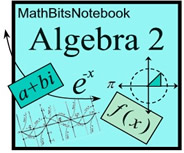|
In a binomial experiment there are two mutually exclusive outcomes, often referred to as "success" and "failure". If the probability of success is p, the probability of failure is 1 - p.
Such an experiment whose outcome is random and can be either of two possibilities, "success" or "failure", is called a Bernoulli trial, after Swiss mathematician Jacob Bernoulli (1654 - 1705). |
 |
| Examples of Bernoulli trials: |
| |
• flipping a coin - heads is success, tails is failure
|
| |
• rolling a die - 3 is success, anything else is failure |
| |
• voting - votes for candidate A is success, anything else is failure |
| |
• determining eye color - green eyes is success, anything else is failure |
| |
• spraying crops - the insects are killed is success, anything else is failure |

When computing a binomial probability, it is necessary to calculate and multiply three separate factors:
1. the number of ways to select exactly r successes,
2. the probability of success (p) raised to the r power,
3. the probability of failure (q) raised to the (n - r) power. |
The probability of an event, p, occurring exactly r times: |

n = number of trials
r = number of specific events you wish to obtain
p = probability that the event will occur
q = probability that the event will not occur
(q = 1 - p, the complement of the event) |
|
If we use an alternate notation for combination,
and express the complement value q as (1 - p),
we have an alternate formula for
binomial probability. |
 |
 Alternative formula form Alternative formula form |
|

The graphing of all possible binomial probabilities related to an event creates a binomial distribution. Consider the following distributions of tossing a fair coin:
Two Toss |
Four Toss
 |

In the following examples, answers will be rounded to 3 decimal places.

 When rolling a die 100 times, what is the probability of rolling a "4" exactly 25 times? When rolling a die 100 times, what is the probability of rolling a "4" exactly 25 times?
|
|
Solution:
n = 100
r = 25
n – r = 75
p = 1/6 = probability of rolling a "4"
q = 1 - p = 5/6 = probability of not rolling a "4"
 |

 At a certain intersection, the light for eastbound traffic is red for 15 seconds, yellow for 5 seconds, and green for 30 seconds. Find the probability that out of the next eight eastbound cars that arrive randomly at the light, exactly three will be stopped by a red light. At a certain intersection, the light for eastbound traffic is red for 15 seconds, yellow for 5 seconds, and green for 30 seconds. Find the probability that out of the next eight eastbound cars that arrive randomly at the light, exactly three will be stopped by a red light.
|
|
Solution:
n = 8
r = 3
n – r = 5
p = 15/50 = probability of a red light
q = 1 - p = 35/50 = probability of not a red light

|

|
For working
with
Bernoulli Trials
on your
calculator,
click here. |
|

NOTE: The re-posting of materials (in part or whole) from this site to the Internet
is copyright violation
and is not considered "fair use" for educators. Please read the "Terms of Use". |
|













